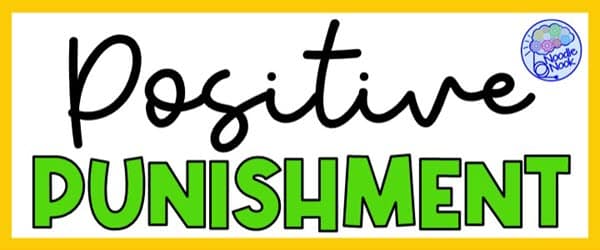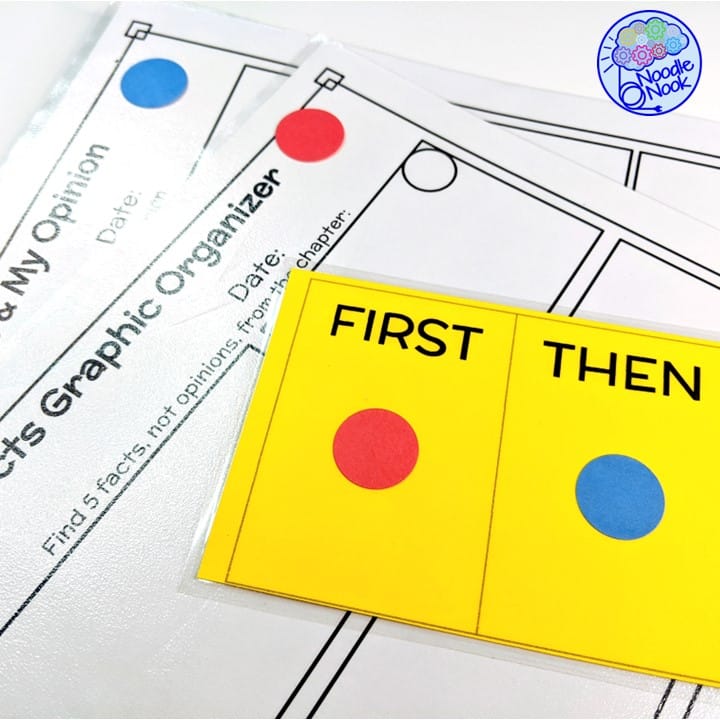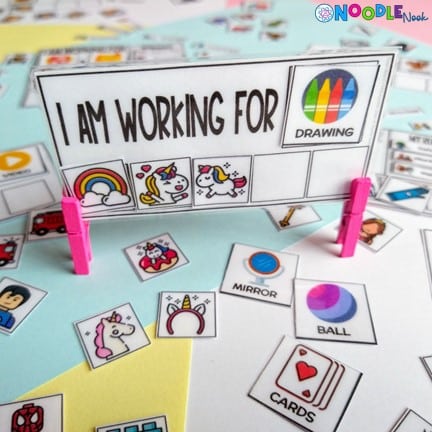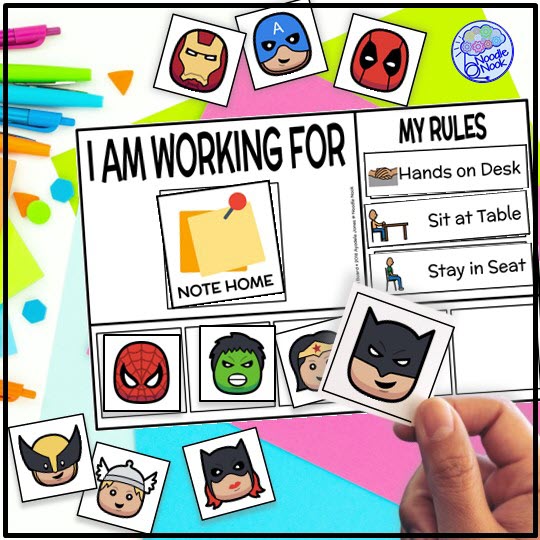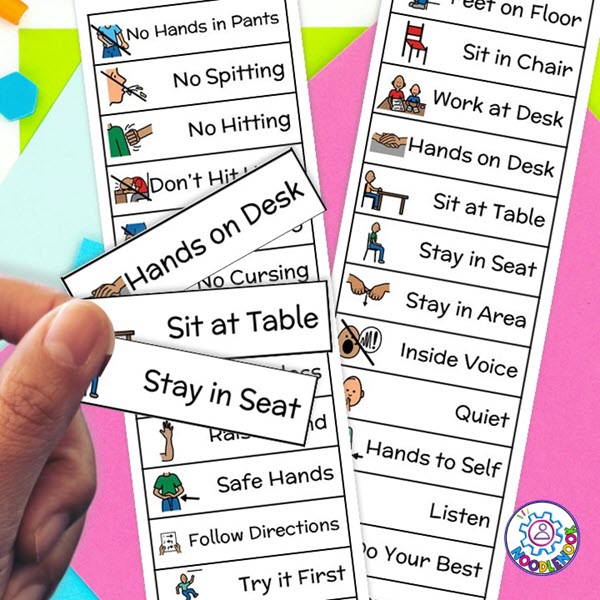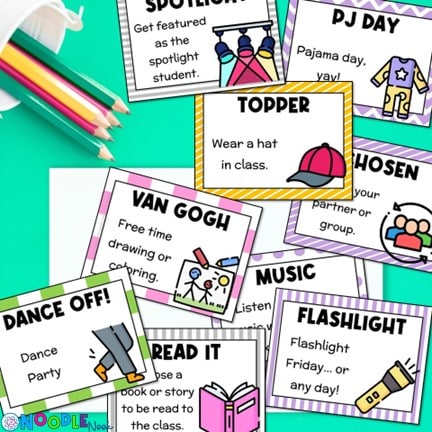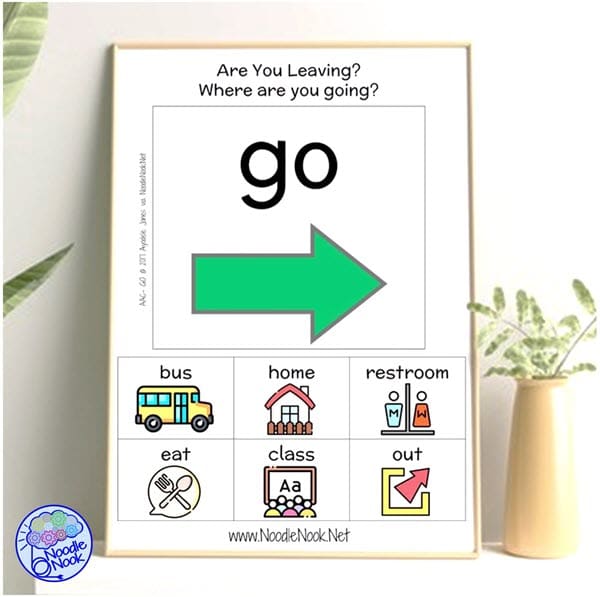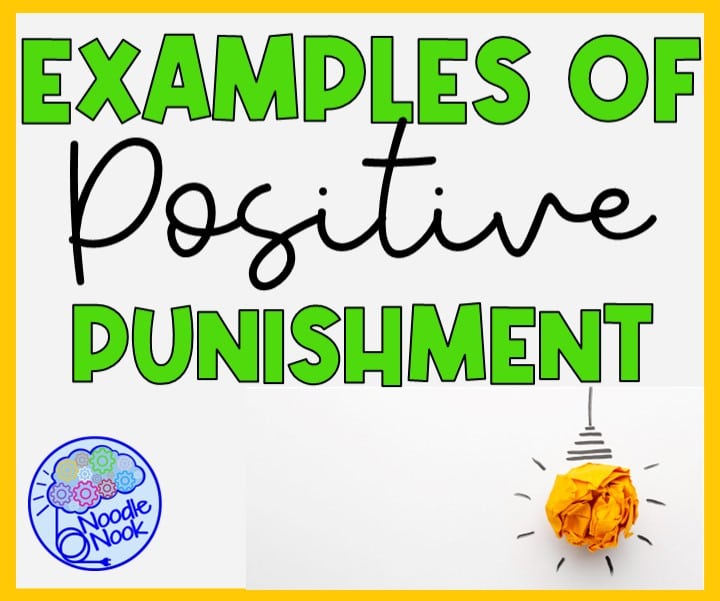When it comes to classroom management and behavior modification, experts often discuss using positive reinforcement to encourage good behavior. However, another important aspect that sometimes gets overlooked is positive punishment. Now, before you cringe at the word “punishment,” let’s explore how it can be used as an effective tool to shape behavior in a classroom setting. In this post, we cover some examples of positive punishment in the classroom and better define it too.
What is Positive Punishment?
The term ‘positive punishment’ sounds like an oxymoron. Formally, positive punishment refers to the application of an aversive stimulus or the removal of a desired outcome in response to an unwanted behavior or an undesirable behavior. Functionally, positive punishment is an unpleasant consequence that is meant to discourage a behavior.
Although it may seem counterintuitive to think of punishment in a positive light, it can play a significant role in promoting positive behavior in students.
How is Positive Punishment Positive?
Punishment sounds so bad. And it’s supposed to. But what makes positive punishment positive? Well, honestly, it’s not positive. The ‘positive’ part of positive punishment is not that it’s good or positive in the sense that we commonly use the word. Instead, the positive refers to the addition of something. It’s the addition of an adverse stimulus or consequence.
This is the opposite of a negative punishment. A negative punishment takes something away.
In other words, the concept of positive punishment is about adding something unpleasant to discourage behavior while negative punishment is about taking something desirable away to achieve the same goal.
Examples of Positive Punishment in the Classroom
It helps to have some positive punishment examples to rethink addressing bad behavior. Remember in each example that the positive punishment is adding something unpleasant to deter a student from doing something they’re not supposed to do.
Example 1: An elementary student pulls their classmate’s hair during class. The teacher makes them write an apology note as a consequence. The note is an unpleasant outcome aimed at discouraging the behavior of hair pulling.
Example 2: A middle school student is caught cheating on a test. The teacher gives them a detention. This is an unpleasant consequence that is meant to discourage the behavior of cheating in future tests or assignments.
Example 3: A high school student is late for class. The teacher assigns them extra homework as a consequence. The extra homework is an aversive stimulus that is meant to discourage the behavior of being late to class in the future.
In each example, the student is not losing something they like, which is how we instinctively think about use of punishment. Instead, their teacher is adding something that should deter future behavior. By using these types of punishment, the teacher hopes to change the child’s behavior and replace that undesired behavior with a preferred new behavior.
It Isn’t Corporal Punishment
One example of positive punishment commonly used in the past was corporal punishment or physical punishment. However, it is important to note that this form of punishment is no longer considered acceptable or common today in most school districts across the United States. Instead, focus on alternative methods that align with modern educational practices. Don’t lay hands on kids. Look for other non-preferred activities or tasks to add when a student has a behavior.
Why Use Positive Punishment
Positive punishment is an important part of shaping behavior in the classroom because it helps students understand the consequences of their actions. And let’s face it, in the real world there are negative consequences to our behaviors.
By experiencing a negative consequence for a particular behavior, students can learn to associate that behavior with an undesirable outcome. Ultimately this will reduce its occurrence in the future. It is crucial, however, to ensure that the punishment is appropriate and does not cause harm or negatively impact a student’s mental health.
Alternatives Positive Punishment in the Classroom
There are several alternatives to punishment that are effective in the classroom. If the idea of punishment doesn’t resonate with you, being proactive can help. With each of these strategies, a teacher can put systems in place that will help deter the behavior in the first place. In other words, you don’t have to deal with behaviors that never happen. Here are alternatives to positive punishment:
- Positive Reinforcement: Focus on rewarding and reinforcing positive behaviors rather than punishing negative ones. Provide praise, recognition, or small rewards for students who exhibit good behavior, complete tasks on time, or demonstrate kindness and cooperation.
EXAMPLE: When a student consistently completes their assignments on time, provide them with a small reward, such as a special privilege, extra free time, or a token on a token board.
- Redirection: Instead of punishing undesirable behavior, redirect the student’s attention and energy towards a more appropriate activity or behavior.
EXAMPLE: If a student is disrupting the class by talking out of turn, redirect their attention to a task or group activity that requires their engagement.
- Modeling: Lead by example and demonstrate the desired behavior for students to emulate. Model appropriate behavior, such as active listening, following instructions, or respectful communication, to encourage students to mirror those actions.
EXAMPLE: A teacher actively demonstrates active listening skills by maintaining eye contact, nodding, and providing verbal affirmations when students share their ideas or thoughts. They also periodically reference an anchor chart on active listening as they model. This encourages students to mimic the behavior and engage in attentive listening.
- Clear Expectations and Rules: Establish clear and consistent expectations and rules in the classroom. Ensure that students understand what is expected of them and the consequences of not meeting those expectations. This proactive approach promotes a positive classroom culture.
EXAMPLE: As part of opening a class, activity or center, the teacher restates the expectations for students so they are clear on what they are supposed to do. During stations, a teacher says “remember as we are moving between stations, we keep our hands and feet to ourselves and our voices are at a whisper”. This simple reminder resets those clear expectations.
- Individualized Behavior Plans: Develop individualized behavior plans that target specific areas of improvement for students. Collaborate with students, their parents, and relevant support professionals to create a plan that focuses on positive reinforcement and provides strategies to address challenging behaviors.
EXAMPLE: A student with a behavior plan who continually struggles to stay on task is allowed some accommodations to be successful. That includes breaking down larger tasks into small little more achievable steps as well as providing positive rewards for completing each step. For this student, they use a reward system and positive behavior chart as part of their individualized plan.
- Social-Emotional Learning: Incorporate social-emotional learning (SEL) programs and activities into the curriculum. Teach students essential skills such as self-awareness, self-regulation, empathy, and relationship-building, which can help them navigate their emotions and make positive choices.
EXAMPLE: As part of a teacher’s weekly lesson plan, each student spends time in a peer group that focuses on social skill building and character development activities. Typically, these activities relate to the topic or theme of the weekly lesson, and are of high interest to the students.
Routines and Procedures Matter!
In order to effectively deal with behaviors in the classroom, it’s essential to have some established routines and procedures. When you set the stage for positive and negative punishment and reinforcement, your students know exactly what to expect when they’re in your classroom. Let’s look at a specific example of a routine that can be put in place which also aligns with positive punishment.
Dealing with a Cell Phone in Class
Imagine a scenario where a sixth-grade student consistently disrupts the class by using their cell phone during instructional time. To discourage this negative behavior, the teacher could implement a form of positive punishment. As part of the classroom routine, the student might be required to place their cell phone in a designated area during class. This denies them access to it for the duration of the lesson. In this case, the removal of the desired outcome, their cell phone usage, serves as the positive punishment.
Token Boards for Behavior
You may have some routines and procedures in place for specific students or for a single student within your classroom. Token economies and token boards can be a way to individualize a behavior plan for a student. Used in conjunction with positive punishments You could implement a system where a token board started full and tokens were removed when a student did not demonstrate the target or preferred behaviors. In this situation when a student engaged in a particularly undesired behavior, they would lose a token. This loss acts as a positive punishment, discouraging the negative behavior and encouraging the student to engage in positive actions instead.
Personally, I prefer to use a token board for reinforcement versus punishment. You can use them either way, just stay consistent. A token board cannot be both a reinforcer and a punisher at the same time. It can be one or the other. Read more and get some FREE token boards in your classroom.
Punishment Versus Reinforcement
With all this talk of punishment and reinforcements, let’s breakdown some more psychological terms.
Negative Punishment
Remember, negative means we take something away. Negative punishment is the removal of something preferred or desired in response to an unwanted behavior. In other words, we take away something that’s valued in order to decrease the likelihood of a behavior reoccurring.
Positive Punishment
Positive means we add something. With positive punishment we are adding a non-preferred task or activity in response to an unwanted behavior. In other words, we’re adding something based on a student’s behavior in hopes of decreasing the likelihood that the behavior will reoccur.
Negative Reinforcement
Again, negative means we take something away. But with reinforcement, it occurs because a student exhibited a desired behavior. So, with negative reinforcements , a non preferred or disliked activity or consequence is avoided because a student displayed an appropriate behavior. In other words, we got out of something we didn’t like because we did the right thing.
Positive Reinforcement
With positive reinforcement we’re adding something based on a desired behavior. In this case we’re providing a reward or access to a preferred task immediately following a desired behavior. In other words, a student is rewarded for their behavior. By pairing preferred behavior with positive reinforcement, we hope a student makes the association between the behavior and the outcome, and that encourages repetition.
Reinforcement and Punishment in Action
Let’s see an example of each of these in action. We have a student who consistently turns in homework late. With positive punishment, the student might get an extra assignment since they turned in their homework late. With negative punishment, a student might miss out on free time because they didn’t turn in their homework on time. With positive reinforcement, a student who turns in their homework on time may get a 10-point bonus on the next test. Meanwhile, with negative reinforcement, the student might avoid a detention by turning in their homework on time.
The main differences between punishment and reinforcement lie in the desired outcome and the mechanism through which behavior is influenced. Both approaches have their merits and can be effective depending on the context and the individual student.
Reinforcement Over Punishment
Numerous studies have shown that a combination of positive reinforcement and positive punishment can yield similar results in behavior modification. However, it is crucial to remember that positive punishment should be used sparingly and with careful consideration. The goal is not to instill fear or create a negative classroom environment but rather to teach students the consequences of their actions and guide them toward making better choices.
Positive Reinforcement – Use It First!
Positive reinforcement is where we try to increase positive behaviors by adding something preferred or pleasant. For most teachers, this is our default within the classroom. Teachers should prioritize the use of positive reinforcement as a primary strategy for several reasons:
- Fosters a positive and supportive classroom environment: Positive reinforcement creates a positive and encouraging classroom atmosphere. When students receive praise, recognition, or rewards for their good behavior or academic achievements, it promotes a sense of belonging, motivation, and self-confidence.
- Builds intrinsic motivation: Positive reinforcement helps students develop intrinsic motivation by associating their actions with a sense of accomplishment and personal satisfaction. When students are rewarded for their efforts and achievements, they are more likely to internalize their successes and take pride in their own accomplishments.
- Promotes long-term behavior change: Positive reinforcement focuses on reinforcing desired behaviors rather than solely punishing undesirable behaviors. By consistently reinforcing positive behavior, students are more likely to develop habits and attitudes that lead to long-term behavior change, as they understand the benefits and rewards associated with their actions.
- Strengthens teacher-student relationships: Positive reinforcement strengthens the bond between teachers and students. When teachers provide positive feedback and rewards, it enhances the teacher-student relationship, creating a supportive and trusting dynamic. Students feel valued and appreciated, which enhances their engagement and willingness to participate in classroom activities.
I think most teachers would agree that positive relationships with students and emphasizing intrinsic motivation are the fastest ways to a positive classroom culture. So, use positive reinforcement first, foremost, and frequently.
When Do You Use Positive Punishment?
Positive punishment should be used sparingly and as a last resort when other strategies, such as positive reinforcement and behavior redirection, have not been effective in addressing a particular behavior. Here are some situations where positive punishment may be considered:
- Safety concerns: When a student engages in a behavior that poses an immediate safety risk to themselves or others, positive punishment may be used to deter the behavior and emphasize the seriousness of the situation. For example, if a student consistently runs across the road without looking, a brief time-out or loss of a privilege can be used as a deterrent.
- Severe or disruptive behaviors: In cases where a student displays severe or disruptive behaviors that significantly interfere with the learning environment or the well-being of others, positive punishment may be used as a means to manage and decrease those behaviors. It should be applied judiciously, considering the specific situation and the individual student’s needs.
- Last resort after other strategies have been exhausted: Positive punishment should only be employed after attempts to address the behavior using positive reinforcement, behavior redirection, and other proactive strategies have been unsuccessful. It should not be the first response but rather a carefully considered option when other methods have not yielded the desired results.
- Teachable moments: Positive punishment can be used as a tool to teach students about the consequences of their actions when other forms of feedback and guidance have not been effective. By experiencing the negative consequence, students may gain a better understanding of the impact of their behavior and be motivated to make different choices in the future.
It’s important to note that when positive punishment is used, it should be applied consistently, fairly, and in a manner that respects the student’s dignity and well-being. Clear communication, explanation of expectations, and opportunities for reflection and behavior modification should accompany the use of positive punishment.
Keys to Changing Behaviors
Using different forms of punishment and reinforcement to change behavior does depend on a few key things. Each of these can impact your ability to change simple behaviors and be successful in addressing more severe behaviors in the classroom.
Primary Reinforcers and Secondary Reinforcers
In the realm of positive punishment, it’s important to differentiate between the use of a primary reinforcer and a secondary reinforcer. Primary reinforcers are inherently rewarding stimuli, such as praise, a favorite toy, or a good grade. On the other hand, secondary reinforcers are learned and acquire their value through association with primary reinforcers. Examples of secondary reinforcers include sticker charts or token economy systems, where students earn tokens or stickers that can be exchanged for a desired reward.
As a student gets older and is better able to understand the context of positive punishment as well as reinforcement, it becomes more important to connect the primary and secondary together. After all, you don’t want to always have to dole out that edible or tablet time to get a student to comply. At some point you’ll want to move away from the obvious reinforcer and use of these kinds of token reinforcers or sticker chart systems help to do that.
Preferred and Nonpreferred Items
In order to know how to motivate students to change behavior, a teacher needs a good understanding of their preferences. Knowing which items, tasks, or privileges are preferred and nonpreferred can make it easier for a teacher to implement reinforcement and punishment. If possible, at the beginning of the school year, do a preference inventory with students so that you have a good idea of what they do and don’t like. That will make it easier to find motivation for them throughout the year.
Token Economy for Behavior
A tool that I use consistently with students, especially those with autism or who receive special education services, is a token board. With a token board, a student receives tokens for a displaying positive behavior. Those tokens are then exchanged for rewards or privileges. This system allows students to understand the connection between their behavior and its consequences. It also allows a teacher and opportunity for positive feedback and reinforcement.
If you’d like to learn more about token boards and how to implement them within your classroom, check out this article: Token Boards in the Classroom.
Deterring with Visuals
I used to joke with a fellow teacher that every Monday was like the first day of school all over again. I’m not sure what happens over the weekend for students, but Monday morning is always a rude awakening. That’s part of why visuals can be so effective at deterring behavior and reminding students of the expectations. As you develop your system of punishment and reinforcement, remember the visuals. As an example, you may want to deter the behavior of running in the hallway. You may post speed limit signs and establish a clear consequence, such as a brief timeout, for those who exceed the limit. By having that visual in place, students will have a consistent reminder of the expectations as well as consequences. We have that in the real world, right? We know we can get a speeding ticket, or get something we don’t want, when we break the law. Real world overlap can help learn lessons for daily life.
Be Consistent
Consistency matters when it comes to changing behaviors. That means as a teacher, not only do you need to be consistent with your expectations with students, but you also need to be consistent and applying the same standards to all students. In other words, no individual students should feel that they are being singled out or targeted. Instead the expectations for behavior are consistent for all. By consistently applying your reinforcement and punishment, students are more likely to associate behaviors with outcomes. And overtime, they’re able to better discriminate when and how to meet behavior expectations.
Individualize Behavior Plans
When implementing positive punishment techniques, it is crucial to consider individual differences and tailor the approach to each student. What may work for one student may not be effective for another. Additionally, clear communication and explanation are essential. Students should understand why a particular behavior is undesirable and what the consequences will be. This allows them to make the connection between their actions and the resulting outcomes. This may take extra effort for students with disabilities or special education services, so keep that in mind.
RECAP: Examples of Positive Punishment in the Classroom
While positive reinforcement is often the preferred method for encouraging positive behavior, positive punishment can be a valuable tool in shaping behavior in the classroom. It helps students understand the consequences of their actions and guides them towards making better choices. By using a combination of positive reinforcement and positive punishment, educators can create a supportive and conducive learning environment that promotes positive behavior and fosters student growth and development. Remember, the key is to use positive punishment sparingly, with careful consideration, and always in the context of a comprehensive behavior plan that prioritizes the overall well-being of the students.

